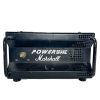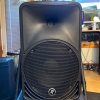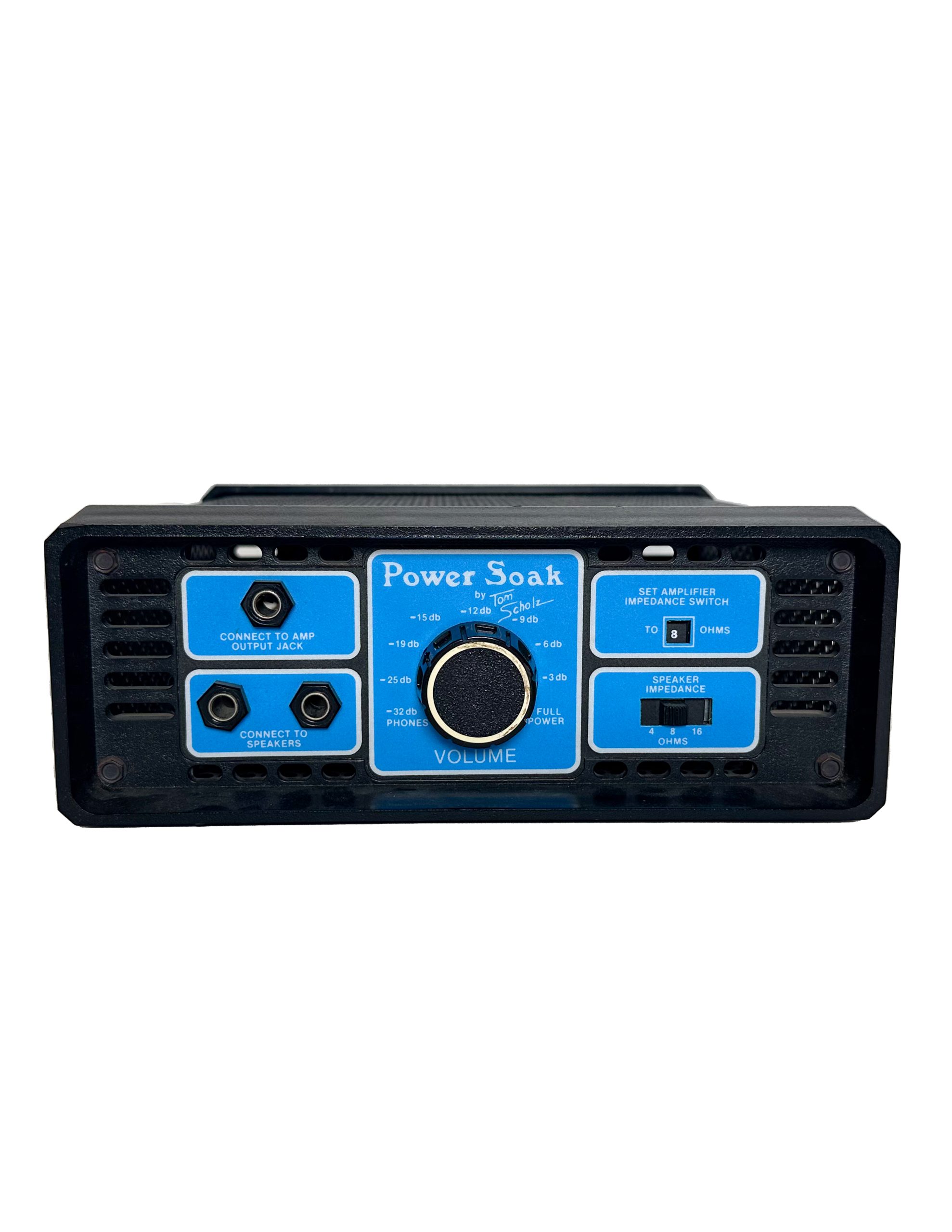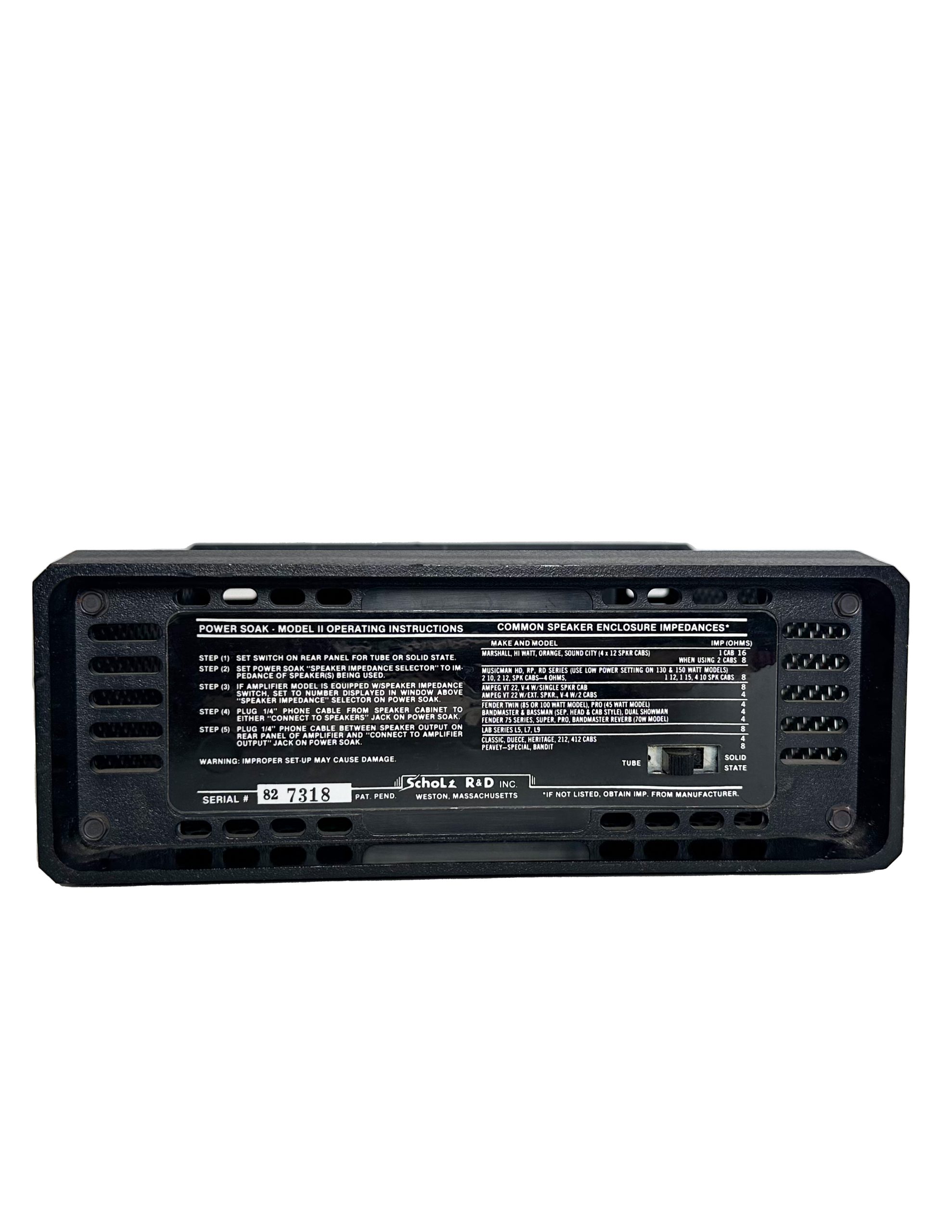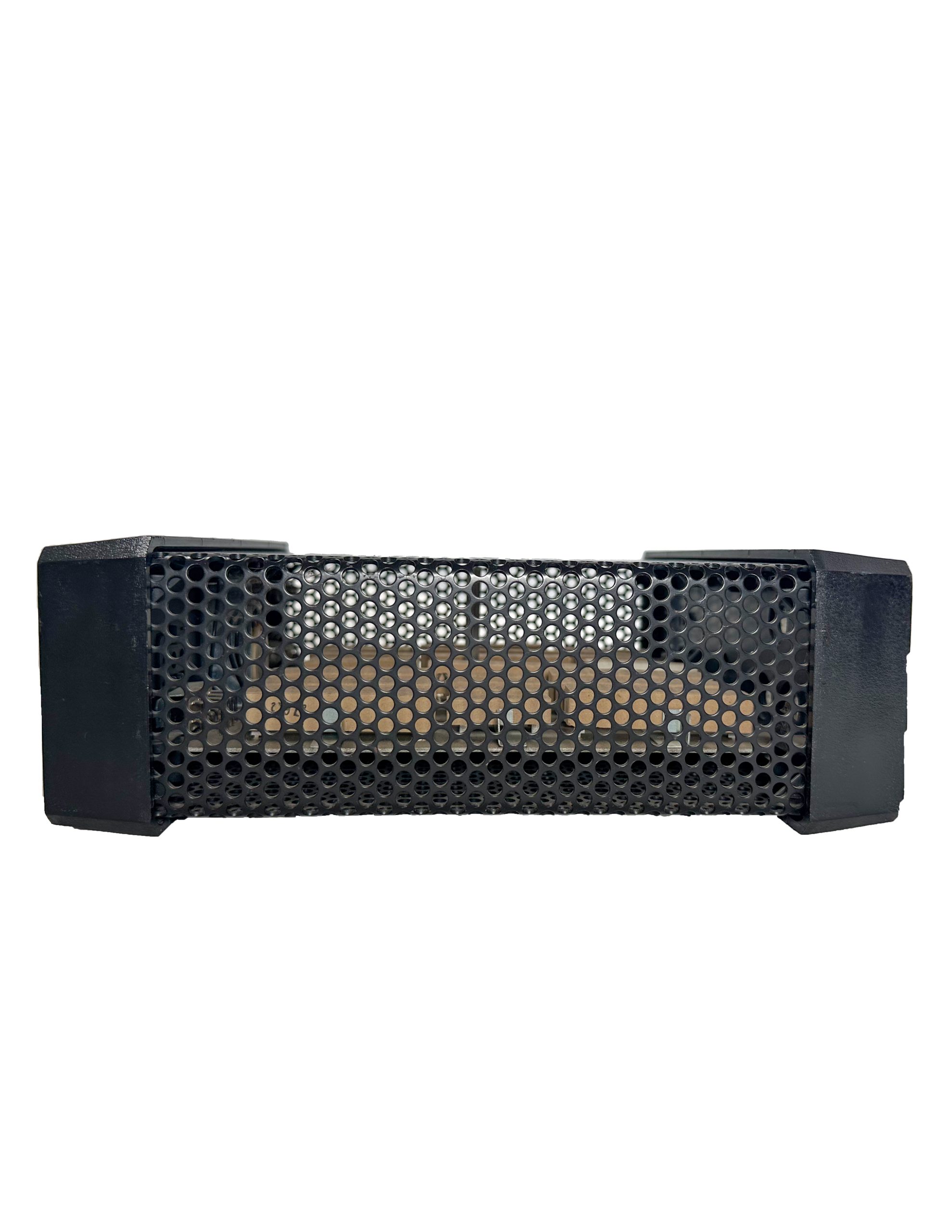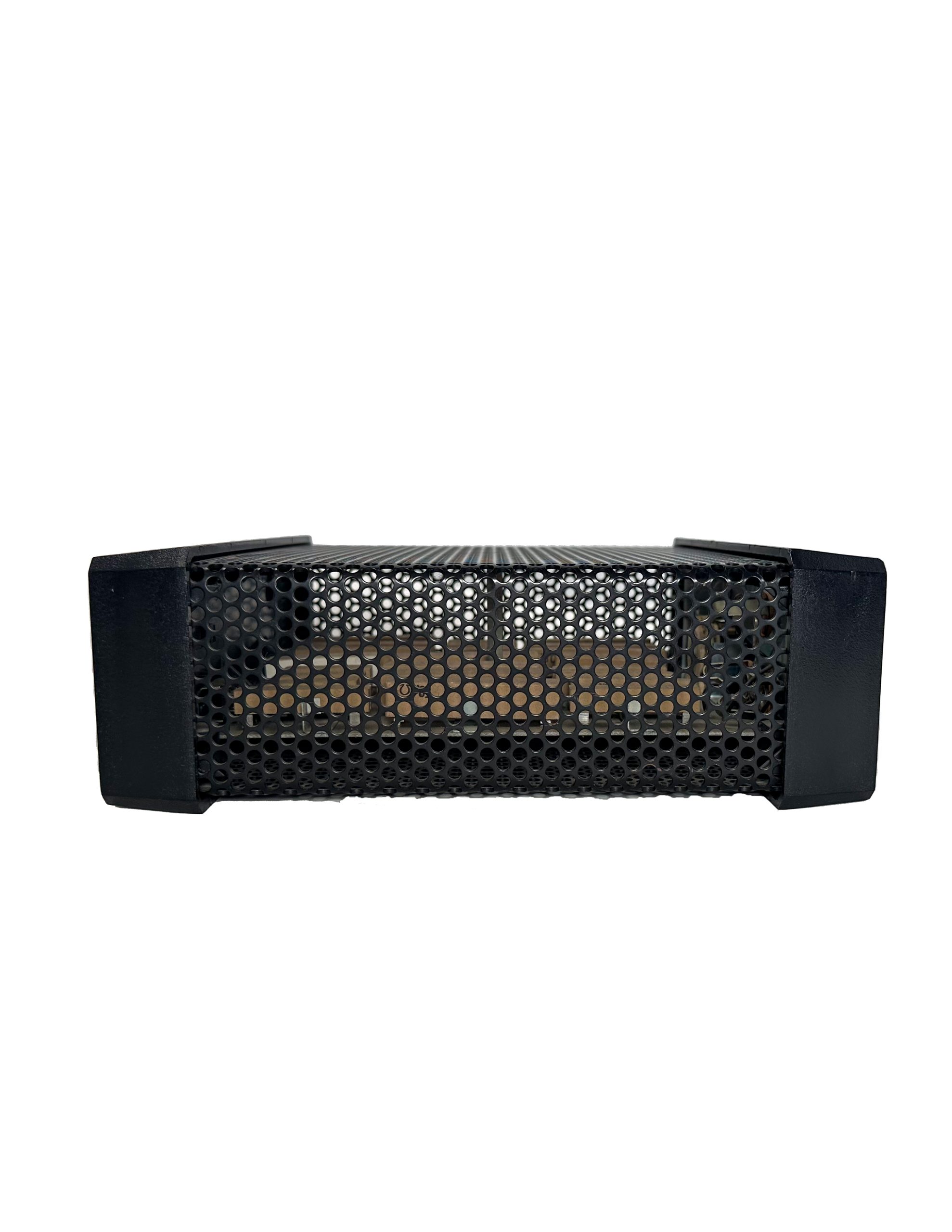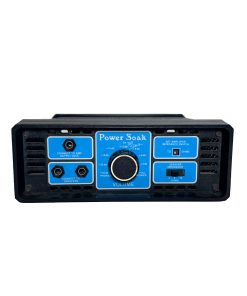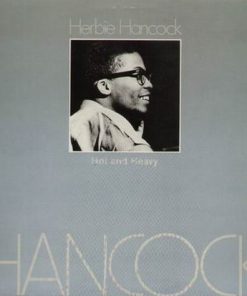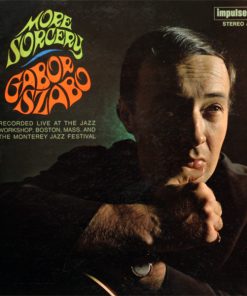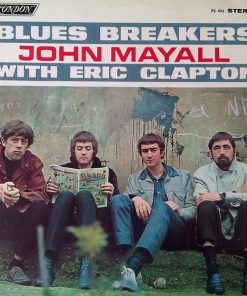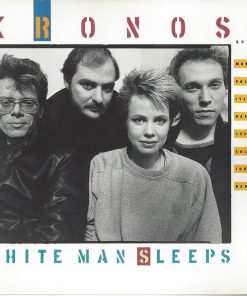We are Eclectic Sounds / aka: eclsounds – a store front in Portland, Or. We are open 7 days a week from 11 – 5 PST (by appointment)
This item is used in excellent condition.
| Tom Scholz has recorded the two first albums of Boston with these big, over-powered Marshall stacks, cranked up at 11. Since he’s a clever man and knew that his ears are precious for a musician, he designed the Power Soak as a “Volume Control Device”, as defined by the US patents 4,143,245, D256,798, 4,363,934 and D270,153. The Power-Soak not only attenuates the power of your amp: it allows a precise control over the global volume of your set-up. In other terms, tweak your sound first, then adjust your volume.
The personal prototypes used by Scholz from 1975 (?) till 1980 allowed the new-born company SR&D to issue its first product, the Power-Soak, in the end of 1980. The first commercial ads appeared in 1981, and were rather product oriented: the Power-Soak is a tool, not a toy, and it really solves a problem for the guitarist. An updated version of the original Power-Soak, known as “Model II”, was issued in the end of 1981: it has an extra switch made to adapt the Power-Soak to the solid-state amps (though its primary target is the tube amps market). The resistors network was tweaked a little, for a more precise attenuation control (?). No audible sonic difference with Model I. Discontinued in 1982 when the Rockman headphones amp was created, the Power-Soak was re-issued in 1992 as a PS-III model: the difference is in the jack positions (rear panel on the re-issue, front panel on the original). The solid-state switch has disappeared, and the manual says that the PS-3 can be used both with solid-state and tubes amps. The impedance selector has two positions only (4 & 8 ohms), but 16 ohms amps can be used at the 8 ohms setting. How many Power-Soaks were built? Around 10,000, if we refer to the number of eBay transactions per year. That’s consistent with the serial number of a Power Soak I own, which has the serial number 81-3391 (approximately 3500 per year). |
The Power Soak must be first connected to the amp. Before doing that, one must set the Power-Soak to the proper impedance with the front panel switch (4, 8 or 16 ohms).
Then one or two cabs (parallel mode) can be connected to the Power Soak outputs: once the Power-Soak is connected to the amp, this amp cannot be damaged, since its powerwill be anyway dissipated by the Power-Soak. Should someone turn his tube amp on before connecting a load to it, the accident will happen: the output transformer will probably blow out!
The Power-Soak is not just a volume pot: it handles up to 100W power (equivalent to a regular light bulb), so using power-designed cables is absolutely necessary: using audio line signal level cables would certainly result in a shortage, blowing the amp out too.
Inside the Power-Soak, what do we have? A network of power resistors, housed in a grill-type enclosure designed to dissipate the heat. In the middle of the resistors network, a rotary selector that configures them for the desired attenuation: from -32dB to 0dB (full power setting). At -32dB, one can even connect the output of the Power-Soak to headphones or to a mixer: the signal level is now low enough for that.
Usage, samples and limitations
The Power-Soak can be used in several situations:
- Crank up an amp in the studio and turn down the volume until people can stand it…
- Tweak the sound you want on stage, then adjust the volume to match the venue or the rest of the band (difficult for a guitarist, but you can do it!)
- Bedroom playing: you can at least use your favorite tube amp at home with a decent sound!
I have put on line some samples recorded with a Power-Soak: search for them in the samples page. You will see (hear?) that the sound is good, knowing it was recorded in a flat with only an SM58 in front of my Boogie, without specific care for the mike’s placement.
Are there any limitations? Apart from the fact that the Power-Soak will not accept a 150W Triple Rectifier (it is “limited” to 100-120W), it’s only fair to say that the less you attenuate, the better it sounds. It is not due to the Power-Soak itself: the guitar speakers are not linear and need a minimum amount of power to “breathe”. If you send only a few watts into a guitar cab designed for 100W, the sound will be somehow flat and muddy. You can partially correct that with the tone controls of your amp, but let’s say it: there’s nothing like feeling the air moving with 100W in your ears, and you won’t get the same sensations with 1W sent into a 4×12′ cab. That’s normal. Moreover, the human ear doesn’t behave the same way at high SPL’s or at low SPL’s, making it impossible to compare bedroom level playing and stage level playing.
This limitation is of course out of scope for normal attenuations: the Power-Soak is really respectful to the sound of your amp if you only need a few dB’s attenuation. Remember that -3dB is equivalent to dividing the power by 2, and the Power-Soak can go down to -32dB (headphones level)
( Due to people taking advantage of eBay / Reverb return policies; wanting to “try out and/or pilfer parts” we can no longer take returns on used gear unless it arrives damaged. Sorry for this inconvenience. We test and guarantee all gear to be 100% working unless stated otherwise )
| Weight | 144 oz |
|---|---|
| Dimensions | 16 × 12 × 6 in |
Related products
To Be Sorted

